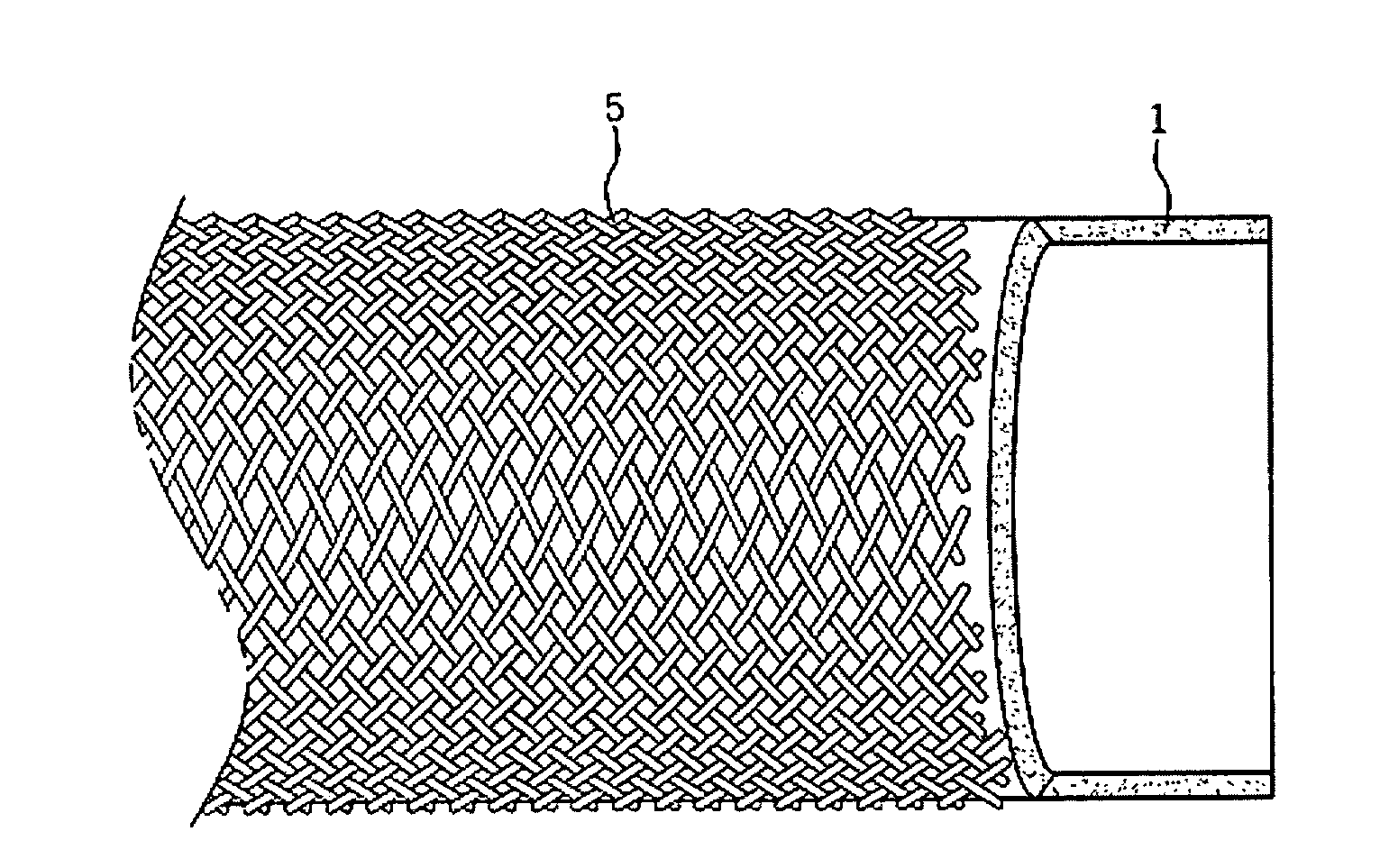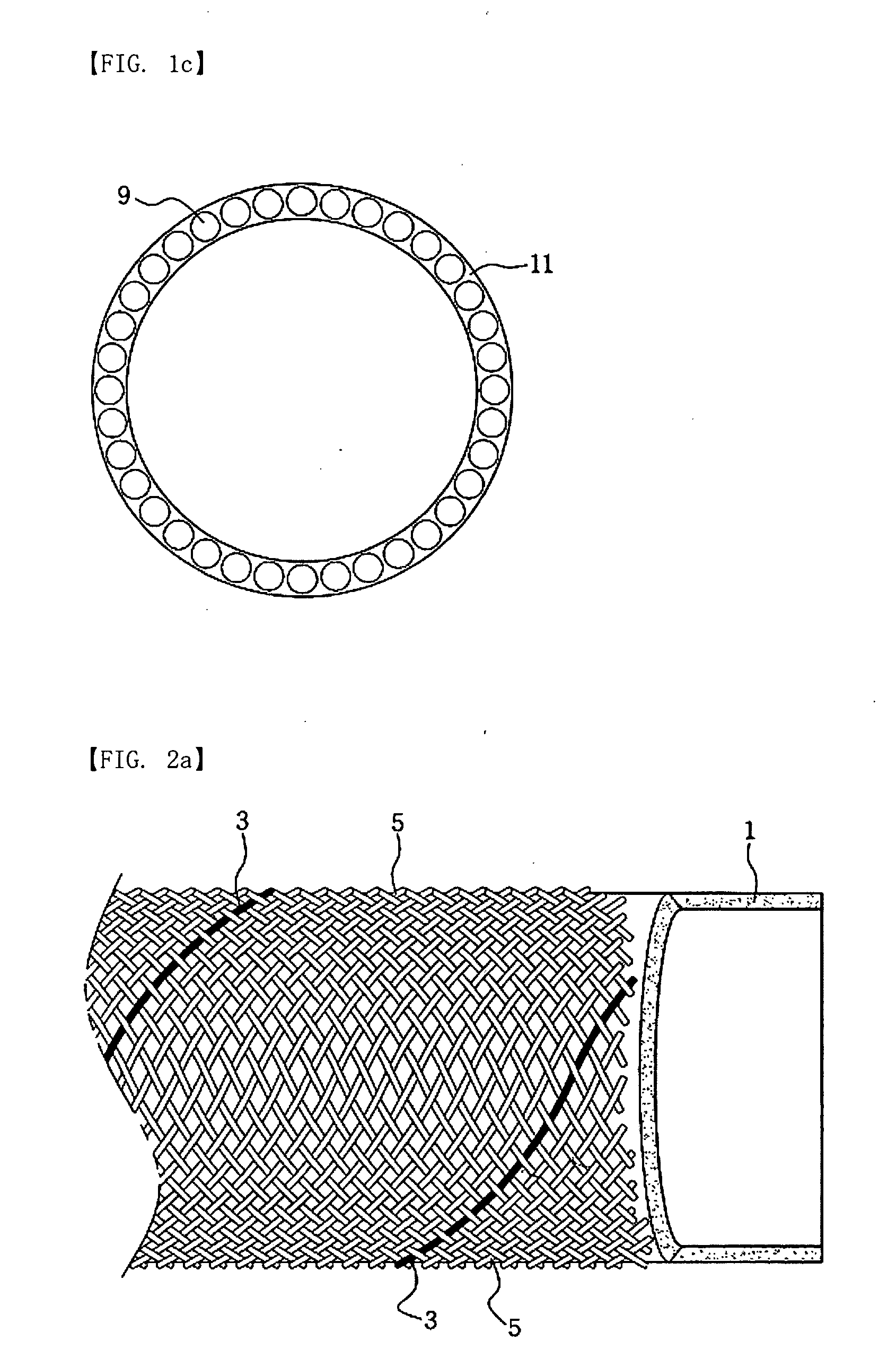Hollow fiber membrane for feeding mixture into hollow space thereof
- Summary
- Abstract
- Description
- Claims
- Application Information
AI Technical Summary
Benefits of technology
Problems solved by technology
Method used
Image
Examples
example 1
[0038]500 g of polysulfone and 130 g of polyvinylpyrrolidone (PVP) were dissolved in 1370 g of dimethyl acetamide to prepare a uniform solution. The solution was cured in water at 35° C. to completely remove the remaining solvent and the additive PVP, and then was prepared into a tubular porous membrane having an inner diameter of 1.1 mm and an outer diameter of 1.9 mm. On the inner surface of the prepared porous tubular membrane, a polyvinylalcohol layer having a thickness of 2 μm was applied to form a tubular active layer. The formed active layer consisted of an outer porous layer and an inner active layer which was more compact than the outer layer. 36 strands of 300 / 150 polyester yarn were braided on the outside of the active layer to form a braid, thus manufacturing a hollow fiber membrane for feeding a mixture into the hollow space thereof, which had an outer diameter of about 2.9 mm.
example 2
[0039]500 g of polysulfone and 130 g of polyvinylpyrrolidone (PVP) were dissolved in 1370 g of dimethyl acetamide to prepare a uniform solution. The solution was cured in water at 35° C. to completely remove the remaining solvent and the additive PVP, and then was prepared into a tubular porous membrane having an inner diameter of 1.1 mm and an outer diameter of 1.9 mm. On the inner surface of the prepared porous tubular membrane, a polyvinylalcohol layer having a thickness of 2 μm was applied to form a tubular active layer. The formed active layer consisted of an outer porous layer and an inner active layer which was more compact than the outer layer. 32 strands of 300 / 150 polyester yarn and 4 strands of stainless steel wire having a diameter of 0.2 mm were braided on the outside of the active layer, thus manufacturing a hollow fiber membrane for feeding a mixture into the hollow space thereof, which had an outer diameter of 2.9 mm.
PUM
| Property | Measurement | Unit |
|---|---|---|
| Fraction | aaaaa | aaaaa |
| Diameter | aaaaa | aaaaa |
| Temperature | aaaaa | aaaaa |
Abstract
Description
Claims
Application Information
 Login to View More
Login to View More - R&D
- Intellectual Property
- Life Sciences
- Materials
- Tech Scout
- Unparalleled Data Quality
- Higher Quality Content
- 60% Fewer Hallucinations
Browse by: Latest US Patents, China's latest patents, Technical Efficacy Thesaurus, Application Domain, Technology Topic, Popular Technical Reports.
© 2025 PatSnap. All rights reserved.Legal|Privacy policy|Modern Slavery Act Transparency Statement|Sitemap|About US| Contact US: help@patsnap.com



